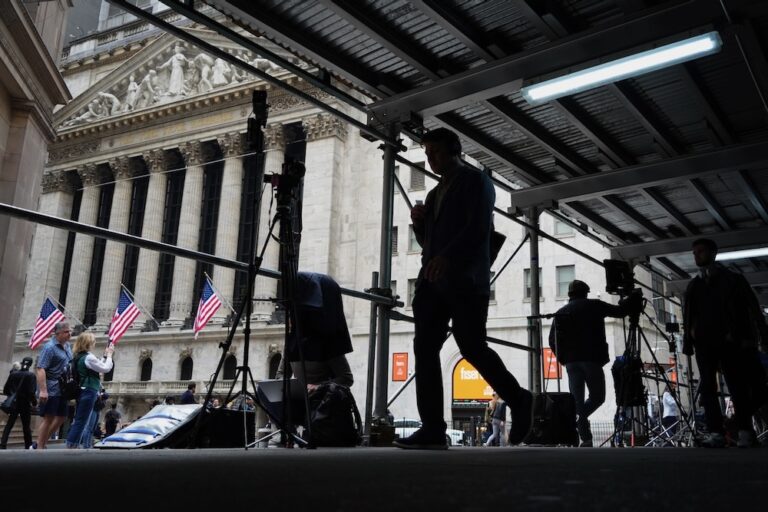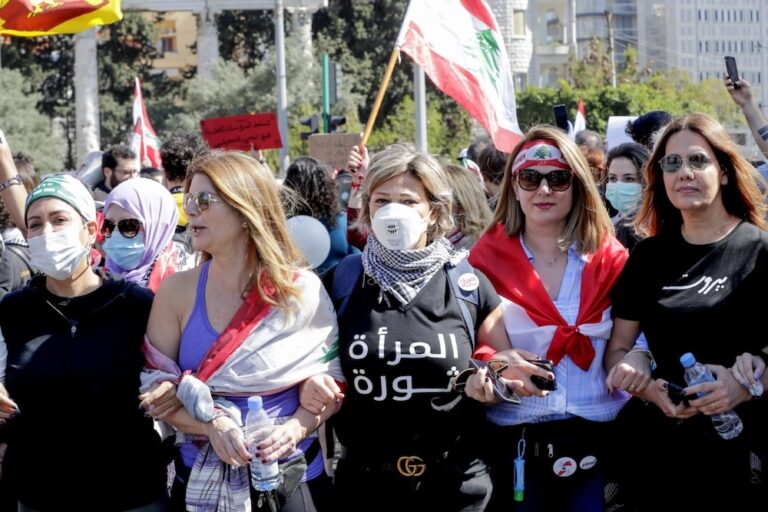The Backstory is a podcast for journalists, editors & anyone interested in the backstory of how news is reported, presented & published. Created by WAN-IFRA, it is now in its second season.
Season 2, Episode 6: Covering protests: Staying safe to tell the story
Protests have become more frequent, and more violent, around the world. Covering them has become increasingly dangerous for journalists, and has required new ways of thinking and acting. This episode puts safety issues into the context of covering protests. What are journalists and editors’ experiences? What should they be thinking about?
In this episode:
- Sergi Vicente, director of Betevé, Barcelona’s public television station.
- Zuraidah Ibrahim, deputy executive editor of the South China Morning Post in Hong Kong.
- Monica Almeida, chief of the investigative unit at El Universo daily newspaper in Ecuador.
- Roger Renni, director of Key Objectives, a specialist company supporting journalists on the ground and providing hostile environment training.
The Backstory production team is Andrew Heslop, Mariona Sanz, Colette Davidson and Sarah Elzas, who edited and mixed the episode. Music in this episode by Chris Zabriskie.
This episode is accompanied by an article by Colette Davidson, entitled Staying safe in the eye of the storm – covering protest movements.
Season 2, Episode 5: Contracts that keep journalists safe
A contract may seem like an afterthought for a freelancer, and it’s not obvious how it is linked to safety. But contracts should be a part of every journalist’s conversation with an editor, especially when the assignment involves risk. What should journalists be asking for? And what should editors and news organisations be thinking about?
In this episode:
- Anna Day, Freelance Journalist, co-founder of the Frontline Freelance Register.
- Safa Al Ahmad, Freelance Journalist/Film-maker.
- Alexander Papachristou, Executive Director, Cyrus R Vance Center for International Justice, adviser on the ‘Model Contract for Freelancers’ from the ACOS Alliance.
The Backstory production team is Andrew Heslop, Mariona Sanz, Colette Davidson and Sarah Elzas, who edited and mixed the episode. Music in this episode by Broke for Free.
This episode, along with episode 4 below, is accompanied by two written pieces, an article combining the two topics by Colette Davidson, and a Q & A with Elisabet Cantenys of the ACOS Alliance on a groundbreaking new insurance scheme for journalists.
Season 2, Episode 4: The Cost of Safety
What is the cost of keeping yourself safe when you’re a journalist? Journalists, editors and security managers help us start to understand how money can be a safety concern in itself, especially for freelancers who are often left on their own to negotiate budgets and insurance coverage.
In this episode:
- Safa Al Ahmad, freelance journalist and film-maker.
- Zaffar Abbas, editor of Dawn newspaper in Pakistan.
- Prash Naik, media lawyer, former general counsel for Channel 4 television in the UK.
- Sharbil Nammour, Global Head of Security and Risk at Vice Media.
The Backstory production team is Andrew Heslop, Mariona Sanz, Colette Davidson and Sarah Elzas, who edited and mixed the episode. Music in this episode by Swelling.
This episode, along with episode 5 above, is accompanied by two written pieces, an article combining the two topics by Colette Davidson, and a Q & A with Elisabet Cantenys of the ACOS Alliance on a groundbreaking new insurance scheme for journalists.
Season 2, Episode 3: The war online: Abuse and harassment, and what journalists are doing about it
Many journalists see and even experience some kind of trauma, whether they’re covering a conflict zone, protests or violent crime, and they can experience anxiety, depression or even PTSD. One of the best ways of coping is to talk about the experiences and the feelings they evoke, but few people do – journalists or their editors. Trauma is considered part of the job; but ignoring it only makes it worse. In this episode we look at moral injury, the kind of trauma journalists can experience, and the symptoms they might exhibit. And how to value their mental health as much as their physical safety.
Journalists are increasingly the target of insults or threats from individuals or groups online, which can have physical impacts and should no longer be seen as separate from the offline world. The goal of the harassment? Censorship. And women bear the brunt of the abuse, which is usually gendered and sexualised.
Journalists have developed ways to deal with online harassment, from shutting down social media accounts, to confronting abusers, to advocating for change on a systemic level. In this episode, we hear about how that works.
In this episode:
- Ceyda Karan, Turkish journalist
- Marija Vucic, Serbian journalist with KRIK Crime and Corruption Reporting Network
- Nighat Dad, lawyer, founder of the Digital Rights Foundation in Pakistan
- Viktorya Vilk, manager of special projects, Free Expression Programmes, PEN America
The Backstory production team is Andrew Heslop, Mariona Sanz, Colette Davidson and Sarah Elzas, who edited and mixed the episode. Music in this episode by Chris Zabriskie.
This episode is accompanied by an article by Colette Davidson, entitled Managing Journalism’s Inherent Risks for the Digital Native Generation.
Season 2, Episode 2: Talking About Trauma. Valuing Mental Health as Much as Physical Safety
Many journalists see and even experience some kind of trauma, whether they’re covering a conflict zone, protests or violent crime, and they can experience anxiety, depression or even PTSD. One of the best ways of coping is to talk about the experiences and the feelings they evoke, but few people do – journalists or their editors. Trauma is considered part of the job; but ignoring it only makes it worse. In this episode we look at moral injury, the kind of trauma journalists can experience, and the symptoms they might exhibit. And how to value their mental health as much their as physical safety.
In this episode:
- Amantha Perera, Sri Lankan journalist who covered the civil war and tsunami, Asia-Pacific coordinator, Dart Centre for Journalism & Trauma
- Finbarr O’Reilly, British-Canadian photographer who covered conflicts around the world, author of ‘Shooting Ghosts: A U.S. Marine, a Combat Photographer, and Their Journey Back from War’.
- Alex Logan, health & safety professional, teaches physical and psychological components of hostile environment training courses for journalists with Key Objectives.
The Backstory production team is Andrew Heslop, Mariona Sanz, Colette Davidson and Sarah Elzas, who edited and mixed the episode. Music in this episode by Broke for Free.
Season 2, Episode 1: Managing safety: What editors can do to keep journalists safe
If journalism protects democracy, then who is protecting journalists? The important role editors and managers play in keeping their reporters safe. In this episode, we hear from editors and safety trainers about starting the safety conversation in newsrooms, to make safety a priority rather than an afterthought. Learn about actual situations that journalists and editors have found themselves facing, and get tips on how to start putting in place safety protocols in your own newsroom.
In this episode:
- Cilla Benko, Director General, Radio Sweden
- Luisa Fernanda Isaza, coordinator for the defence and support of journalists, FLIP, Colombia’s press freedom foundation
- Eliot Stempf, Head of High Risk, Buzzfeednews
- Elisabet Cantenys, Executive Director, ACOS Alliance
For resources and tips visit WAN-IFRA’s press freedom page. Check back for regular updates and additional resources. Read the accompanying article: Finding the balance – when is reporting from a danger zone worth it?
The Backstory production team is Andrew Heslop, Mariona Sanz, Colette Davidson and Sarah Elzas, who edited and mixed the episode. Music in this episode by Swelling.



